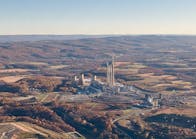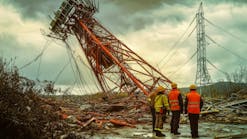Low-Carbon Steel Heat Exchangers Decarbonizing Helsinki Hospital Construction
A historic healthcare facility in Helsinki is working to cut its carbon footprint 60% by installing new energy-efficient heat exchangers.
Alfa Laval is delivering its plate heat exchangers as part of the new construction for the 100 million Euro (US$108M) Laakso Joint Hospital project. Alfa Lavel is collaborating with Outokumpu and SSAB on incorporate low-emission steel into the plate heat exchangers.
Decarbonization in Hospital Construction: Read More
The heat exchangers will provide an energy-efficient heat transfer solution for the new cooling system, aiming to maintain a low carbon footprint throughout the product life cycle. The Laakso Joint Hospital construction is incorporating life cycle considerations from the planning and implementation stages through to construction and maintenance.
"Our heat exchangers already contribute to reducing our customers' emissions during operation. By utilizing low-emission steel, we are also decreasing emissions in their upstream value chain," said Julien Gennetier, Vice President Energy Division, Alfa Laval, in a statement. "This collaboration serves as a model for how local initiatives can have a global impact, pushing the boundaries and scaling up the usage of low-emission materials. This results in the lowest carbon footprint ever measured for an Alfa Laval gasketed plate heat exchanger."
The original Laakso Hospital started as a tuberculosis treatment center nearly 100 years ago. It was renamed Laakso Hospital in 1959.
The new joint hospital is part of a facility-wise overhaul which will renovate or rebuild through 2030. The new buildings will house treatment for psychiatric and somatic diseases in the Laakso and Ohkola areas.
As construction planners considered ways to make the new hospital more efficient, they focused on low-carbon heat transfer solutions to save energy long-term. The installation of five Alfa Laval Concept Zero TL10 gasketed plate heat exchangers at Laakso Joint Hospital this year will enable operational savings and reduced emissions in the upstream value chain.
"The SSAB Zero steel is made using recycled steel and by using fossil-free energy during the production, the fossil carbon emissions are virtually zero," said Tony Harris, Head of SSAB Europe.
Buildings and construction sectors account for close to 21% of commercial and industrial greenhouse gas emissions, according to the United Nations Environment Programme. In 2022, buildings account for 34% of global energy demand and 37% of process-related carbon dioxide emissions, according to the UN.
Track the Many Paths in the C&I Energy Transition
Follow our free EnergyTech Transitions E-Newsletter





